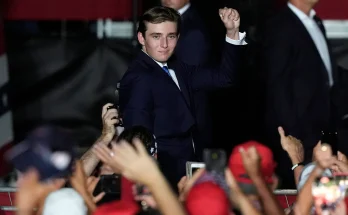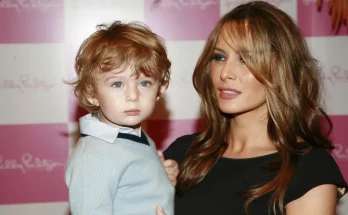When Zoran Mandani stepped into the Oval Office for his first high-profile meeting with Donald Trump, the country braced for fireworks. For nearly a year, the Mayor-elect of New York City and the President had exchanged sharp words, veiled jabs, and at times outright insults.
But once the cameras began rolling, something else happened—
something almost nobody caught in real time.
The gestures.
The tone.
The unexpected warmth.
Hints that the two men—once political opposites—may have walked out of that room with a quiet, early consensus.
1. The First Gesture: Relaxed Posture, Light Humor — and a Shift in Trump’s Tone

Observers noticed it instantly: Trump leaned forward with open palms, a sign of receptiveness rather than dominance. Mandani, typically forceful in his public speaking, softened his shoulders and allowed Trump to take the conversational lead.
This wasn’t the tense standoff analysts predicted.
It was something far more surprising: rapport.
Trump, who rarely praises anyone from New York City leadership, broke the ice by saying he was “impressed” with Mandani’s positions on several key issues—
particularly:
-
cost of living
-
crime reduction
-
housing construction
-
economic revitalization
By the time Trump remarked,
“Life in New York City will be more comfortable under his leadership,”
even veteran reporters exchanged looks of disbelief.
This was not the Trump they expected.
Nor the Mandani they thought they understood.
2. The Second Gesture: Mandani’s Careful Head Nod — A Signal of Agreement
While Mandani avoided overly flattering Trump, he also didn’t confront him.
Instead, he repeatedly nodded in short, controlled motions—signals body-language experts associate with agreement and acknowledgment, not resistance.
When Trump spoke about shared priorities, Mandani nodded.
When Trump referenced affordability issues, Mandani nodded.
When Trump talked about crime and policing reforms, Mandani nodded again.
Not once did he fold his arms, tense his jaw, or avert his gaze—
all common signs of internal disagreement.
The message was subtle, but unmistakable:
“We’re not enemies today. We’re problem-solvers.”
3. The Third Gesture: Humor as a Peace Offering
Then came the moment that truly shifted the mood.
A reporter, clearly hoping to reignite tension, asked Mandani about his past comments calling Trump a “tyrant.”
Before the mayor-elect could respond, Trump laughed—
a loud, surprisingly good-natured laugh—
and waved the question away.
“It’s okay,” he said.
“I’ve been called worse than a tyrant.”
The room erupted in laughter, including Mandani himself.
In that single moment, the hostility of the past year seemed to evaporate.
Humor became a bridge—one neither man had used before.
And Mandani’s grin, a genuine one, wasn’t lost on anyone paying attention.
A Meeting That Shifted More Than the Mood
By the end of their Oval Office session, analysts realized they were watching something rare:
Two political adversaries finding common ground in real time.
Trump appeared willing to reset his relationship with the city under Mandani.
Mandani appeared ready to cooperate rather than confront.
And both men, through gestures more than words, signaled that the next four years might look very different from the last four.
Not a truce.
Not a surrender.
But something closer to a grown-up agreement:
“We don’t have to like each other to fix what needs fixing.”
And in an era defined by division, that alone may be the most remarkable outcome of all.





